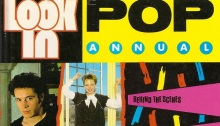Heavy Pagan Pottery: Denby Tableware
A strange talisman of British middle- and lower-middle-class aspirations of the 1960s and 1970s, Denbyware—the costly, absurdly heavy, hard-wearing (read, impossible to rid yourself of or destroy) brand of British tableware famed for its dun-colored hues, threatening shapes, and cranial-trauma patterns—was for a time the ne plus ultra of performative provincial socializing…









